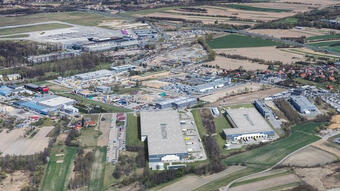The Kraków industrial real estate market is characterized by relatively low saturation and a record-low vacancy rate. Panattoni has already completed over 270,000 sqm of industrial space in the region, of which approximately 50,000 sqm is in the City Logistics formula. Now, the developer has completed the construction of City Logistics Kraków Airport II with an area of 21,850 sqm and has put into use the first stage leased by Allegro.
"City Logistics Kraków Airport II is perfectly located and already provides excellent exposure to the market in the capital of the region. It is an attractive proposition for companies in the e-commerce industry and those operating in urban logistics, which was already appreciated by the first tenant - Allegro", says Filip Noworól, Senior Leasing Manager at Panattoni, adding, "The investment adjacent to the Kraków airport is being delivered at an ideal time. The construction of a new cargo terminal is currently underway, which will increase the transport capacity of the port to 8,000 tons per year. With the development of cargo traffic in Balice, the business potential of our latest park will naturally grow."
Allegro is already conducting processes related to sorting parcels with its Allegro One Box parcel lockers. The client also uses individually adapted office and social space.
Thanks to the small minimum rental modules - about 1,650 sqm - the facility is a proposition for small and medium-sized enterprises looking for space near Kraków. City Logistics Kraków Airport II is located in Cholerzyn, close to the A4 motorway junction, which will allow for efficient connections with key centres in southern Poland - such as Rzeszów, Katowice, or Wrocław, as well as the south-western and south-eastern border.
The facility will undergo BREEAM certification at the Excellent level. Additionally, strengthening the roof surface will allow for the future installation of photovoltaic systems. Low-emission steel was used in the construction, and the insulation of the walls has been increased compared to current standards. Thanks to the solutions applied the annual EP index, i.e., the annual non-renewable primary energy demand of the building, has been reduced by more than 10%.
source:property-forum.eu



